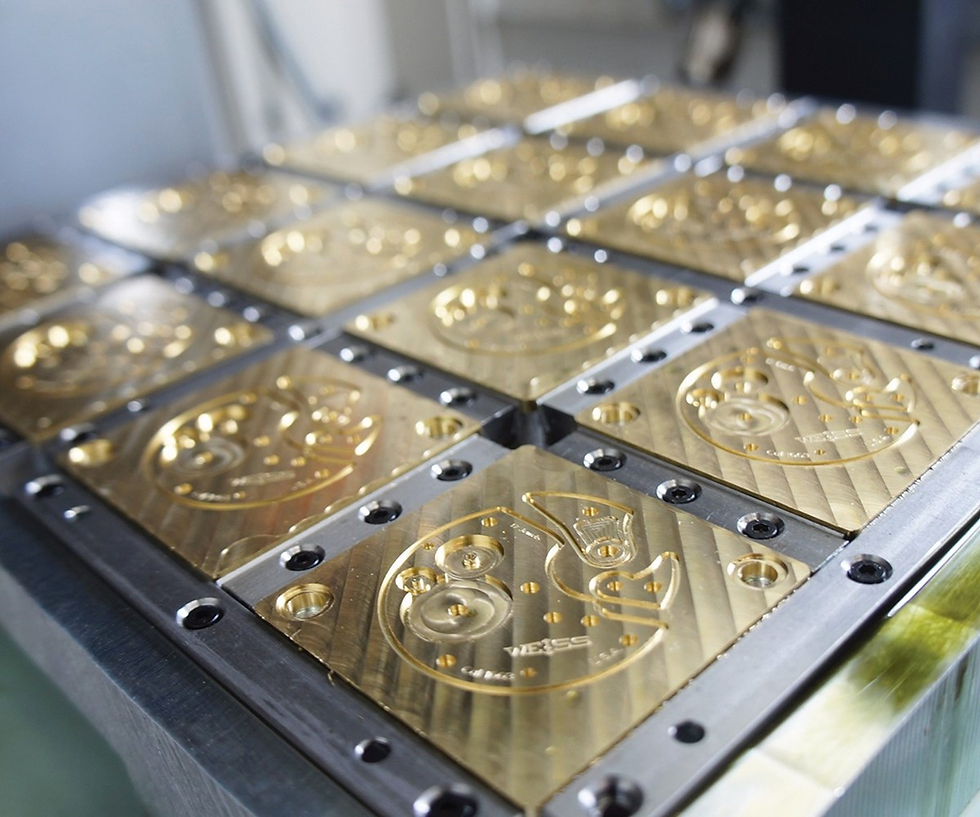Finishing process in watchmaking is what makes a timepiece different from others. The finishing technique should be used to increase its value and improve its appearance and durability.

Akriva Tourbilon finishing. Source Esper Luxe

Some watches have different prices depending on the transparent or closed-case back. The problem isn't only about the look of your movement but also the quality of the finishing process.
A polishing process affects frictional force on watchmaking parts that are in contact with each other, one of the most common one is the barrel composition. Polishing process reduces unwanted malfunction and keep every component to runs smoothly.
One for the most crucial part is the pinion component. When it is not polished adequately, it will cause defects in mechanism. Prolonged of use will affect the adjustment, function, and semblances
An irregular bridge component (such as having sharp edges) can make movement repairs be more difficult. Without further a do, here are some of the activity that usually took place in the finishing process of watchmaking;
The Passivation Process

Image from Watches by SJX
The passivation process, also known bluing process, is the bluing of steel mainly taken place by the in-hand traditional method, which is to heat the screws in high heat (of about 590 Fahrenheit) to achieve the perfect blue color. In the following image, it shows the tough and functional blued-steel screws being added color and eminence to the A. Lange & Söhne movement.
Most mechanical watches today undergo the bluing process of the screws and watch hands. Just like its name after a bluing process, the top of the screw or watch hand will have a homogeneous blue shade. This helps to keep the blued parts to be more durable.
Henrik Korpela (co-founder of K&H Watchmaking) explained that bluing is time-consuming. Bluing screws are not just decorative. It serves the functional purpose of extending the longevity of each screw.
The Cutting Process

Patek Phillip Anglage process. Source Amazing Technology
In watchmaking, a cutting process helps smoothens the ends and edges of every watch part. It is done by placing the components at a 45-degree angle and polishing each piece to make them shiny. The most challenging cutting process is on the interior corners, and to achieve the best result, it can only be done by in-hand traditional way.
(*the component edges and smoothness consistency play a significant role in this process. Thus watchmakers usually make sure of the best result.)

Chamfered bridge after anglage process, Image from Archive Horlogerie Suisse
Mirror Polish; Black Polish

Image from Monochrome
Before and after the black polishing process.
Mirror polishing in watchmaking is a process that is used to create a mirror-like finish on metal surfaces. This process can be done manually by rubbing the surface with a polished object such as a glass, or it can be done with an electric machine. It is also possible to use modern techniques such as lasers to achieve this effect.
Another technique of mirror polish is "black polishing." A process called Black Polishing or "speculaire finishing" is the best way to polish steel watch parts, such as screws, bridges, and levers. This type of finishing is typically done manually with close attention to detail, and you'll only find it on the most sought-after watches.
Circular-Graining or Stippling

Image by Fratello watches
Circular graining in the form of perlage in NOMOS Alpha Caliber movement.
These techniques give an even matte texture to significant components such as the rachet, wheel, and plates. The linear graining process is done by sanding the parts onto abrasive material. Circular graining and sunray patterns are created using a grinding wheel in the form of a bell that makes straight lines starting from a center point.

Image from Blender Artists
Close-up of perlage on a base plate
In this technique, the artisan applies emery paste to the end of the peg wood so it can be used effectively on rotating clocks. The artisan will then press the surface of the plate to create a pattern. The overlapping circular pattern commonly found on the top and bottom of the scale is the result of the perlage technique, which makes the plate cleaner and has a smoother surface.
The Striped Finishing

Côtes de Genève on a Hamilton movement. Image from Beyond a watch
The striped pattern finishing process, also known as the "Geneva lines" feature parallel stripes and are an excellent technique to hide blemishes caused by scratches. The Geneva pattern can be done manually by hand or can also be done by machine, where a ruler is used to scratch the surface.
Another method is by using a "lathe". A lathe is a machine tool that rotates your workpiece about X axis of rotation for a bunch of different operations. This technique helps prevent movement damage due to tiny dust.
 |  |

Comments